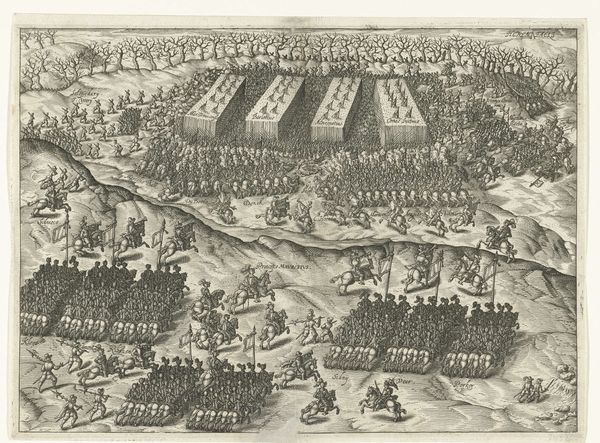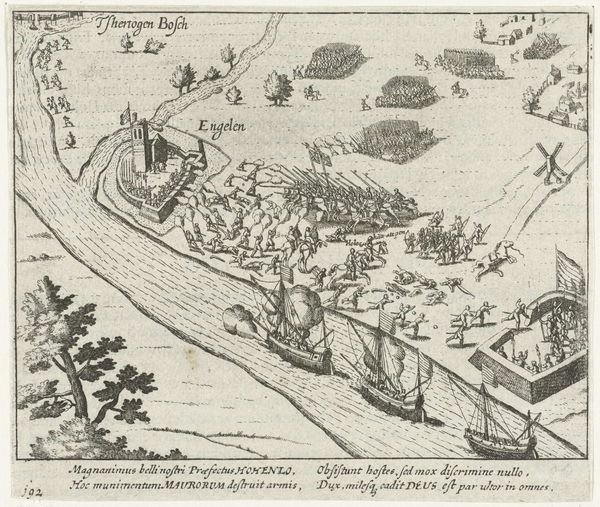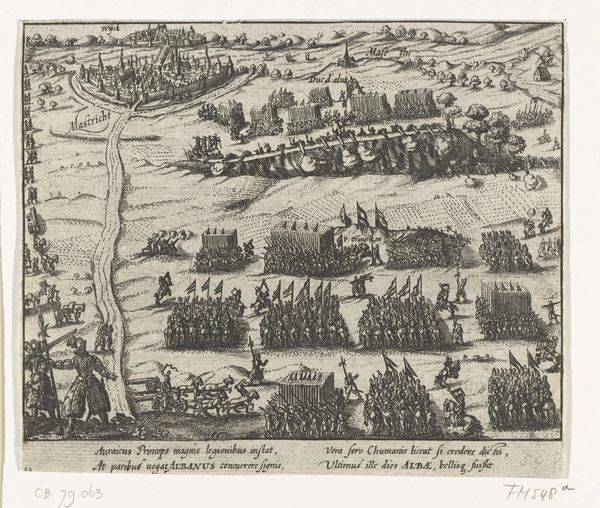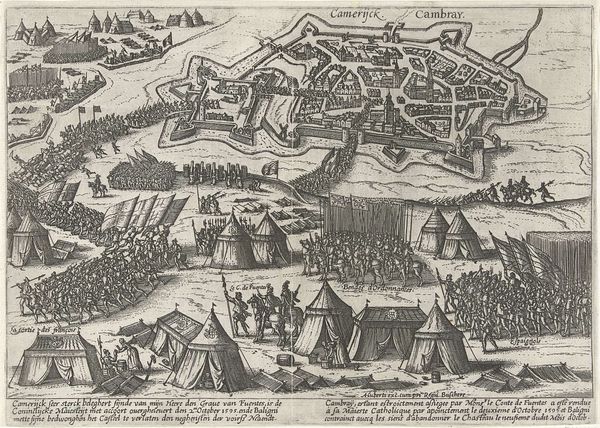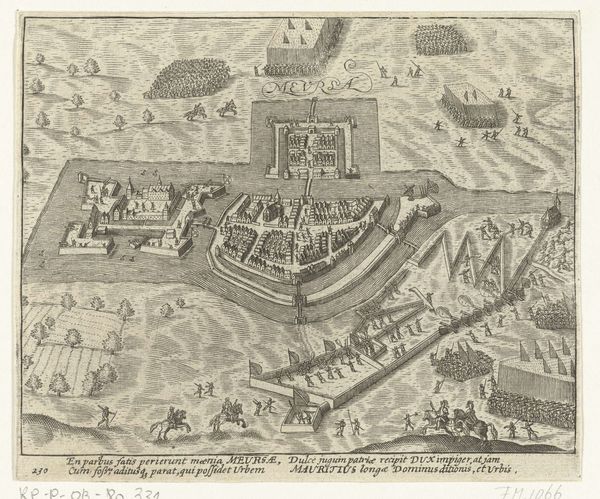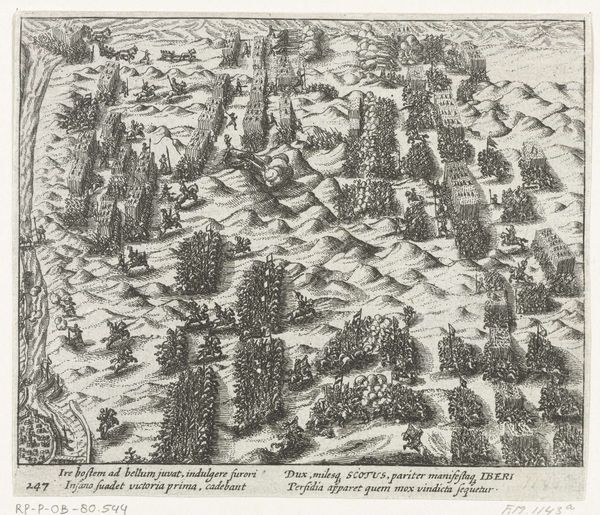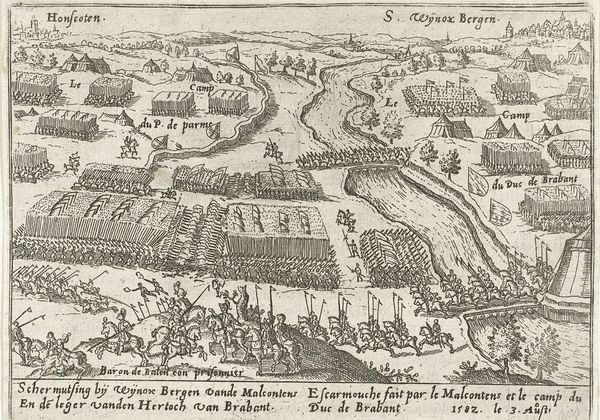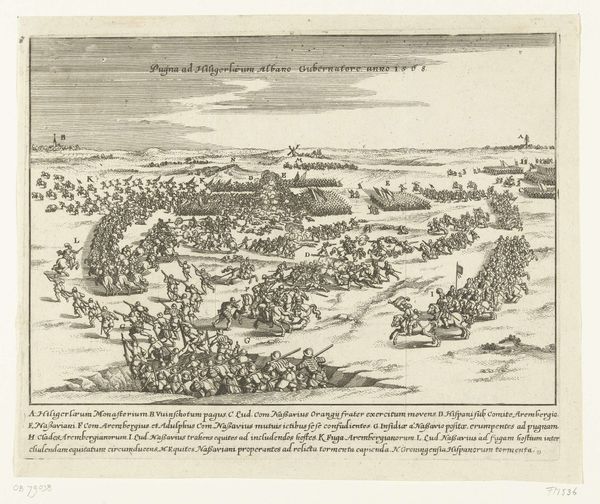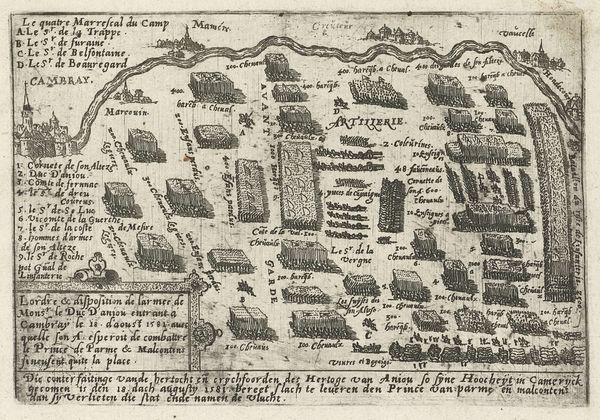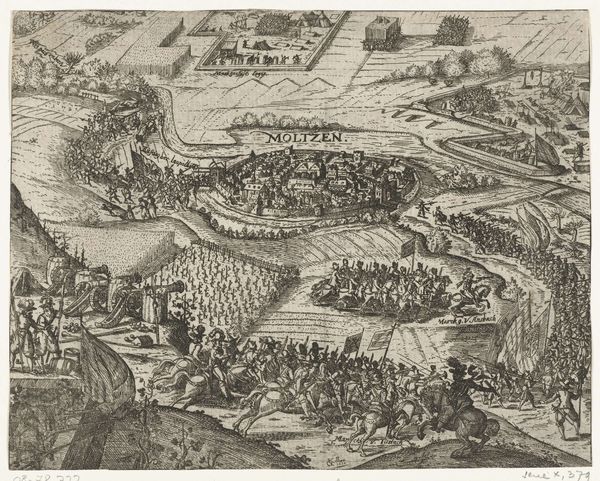
print, engraving
#
baroque
#
pen drawing
# print
#
ink line art
#
geometric
#
line
#
cityscape
#
history-painting
#
engraving
Dimensions: height 140 mm, width 160 mm
Copyright: Rijks Museum: Open Domain
Curator: This print, "Coevorden door Maurits ontzet, 1594," offers us a fascinating glimpse into Dutch military history. Created between 1613 and 1615, it depicts the relief of Coevorden by Maurice of Nassau. It's an engraving, likely intended for dissemination and to celebrate Dutch military prowess. Editor: It's like looking at an incredibly organized ant farm. Rows and rows of marching men. But the detail is just… hypnotic! You could lose yourself for hours tracing those tiny lines. What's with all the covered wagons? Curator: Those “wagons,” as you call them, are likely siege engines or mobile fortifications – perhaps gabions filled with earth. Remember, this is pre-explosives; siege warfare was about engineering, patience, and attrition. The print is fascinating as it shows us the tactics and technologies that shaped warfare in this era. Consider its political role; art such as this can promote a sense of national identity and celebrate a recent military success. Editor: Attrition, huh? Sounds delightful! It also sounds a bit slow paced compared to battles depicted today. It all seems terribly geometric. Though I guess war boils down to geometries—strategy, lines of sight. This bird's-eye perspective removes all the visceral terror and pain, leaving just the cold calculation. Curator: Precisely! The print employs that elevated viewpoint, offering a strategic overview, an almost god-like perspective on the event. We aren’t meant to focus on the individual soldier, but rather on the overarching strategy and triumph of Prince Maurice's forces. Note the walls of Coevorden – essential viewing as this piece shows its relief from seize. Editor: It definitely succeeds in making everything appear well ordered and clean – distant almost. Makes me think about the sanitization of history, and art's role in crafting the narratives of events. But the sheer density of line work creates a strangely beautiful, almost meditative effect too. Curator: It’s interesting how you pick up on that aspect, how this functions as both a historical record and an aesthetic object. Looking at this engraving deepens my understanding of the Netherlands' struggles in the 16th century. Editor: And looking at it allows my mind to drift into all kinds of interesting imaginings. Funny how something created to document the external world can so easily take you into one that's entirely internal.
Comments
No comments
Be the first to comment and join the conversation on the ultimate creative platform.

